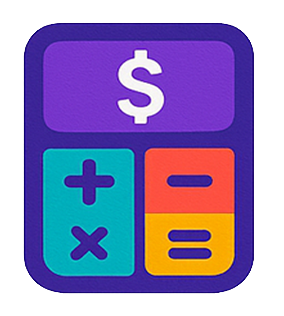Debt-to-Income Ratio Calculator
| # | Debt Payment |
|---|
Debt-to-Income Ratio Calculator: Measure Your Financial Health
Keywords: debt-to-income ratio calculator, DTI calculator, debt to income ratio, financial health, personal finance, income vs debt, loan eligibility, mortgage approval, debt management, calculate DTI, DTI percentage, budgeting, debt-to-income ratio formula, financial planning, creditworthiness
What Is a Debt-to-Income Ratio?
The Debt-to-Income (DTI) ratio is a key personal finance metric that compares your total monthly debt payments to your gross monthly income. Lenders and financial institutions use this percentage to determine your ability to manage monthly payments and repay debts. A lower DTI indicates strong financial health and a higher likelihood of loan approval.
Understanding your DTI helps you:
Evaluate your financial stability
Determine your eligibility for mortgages, personal loans, or credit cards
Make better budgeting and debt management decisions
How to Use the Debt-to-Income Ratio Calculator
Our Debt-to-Income Ratio Calculator simplifies the process of calculating your DTI. Just enter:
Your monthly income before taxes
Your monthly debt payments (credit card minimums, car loans, student loans, mortgages, etc.)
The calculator will instantly show your DTI percentage, along with an interpretation of what your result means for your financial profile.
Example:
Monthly gross income: $5,000
Total monthly debt payments: $1,500
DTI = ($1,500 ÷ $5,000) × 100 = 30%
This means 30% of your monthly income goes toward paying debts.
Debt-to-Income Ratio Formula
To calculate your DTI manually:
DTI (%) = (Total Monthly Debt Payments ÷ Gross Monthly Income) × 100
Include the following in monthly debt payments:
Mortgage or rent
Auto loans
Credit card minimum payments
Student loans
Personal loans
Alimony or child support (if applicable)
Do not include:
Utilities
Groceries
Insurance premiums
Transportation or gas
What Is a Good Debt-to-Income Ratio?
Most lenders prefer borrowers with a DTI below 36%. Here’s a breakdown:
DTI Range | Assessment | Interpretation |
|---|---|---|
Below 20% | Excellent | Very low debt. Great financial health. |
20% – 35% | Good | Manageable debt. Eligible for most loans. |
36% – 49% | Fair | Some concern. May limit borrowing capacity. |
50% and above | Risky | High debt load. May be denied for loans. |
Debt-to-Income Ratio Calculator Mortgage lenders, in particular, prefer a maximum DTI of 43%, though some may allow slightly higher ratios under special loan programs.
Why Your DTI Ratio Matters
1. Loan Approval
Banks and credit unions consider your DTI when reviewing applications for mortgages, car loans, or personal loans. A low DTI suggests you’re more likely to repay your loan on time.
2. Interest Rates
Applicants with lower DTI ratios often qualify for lower interest rates, as they pose less risk to lenders.
3. Credit Score Support
Although your DTI doesn’t directly affect your credit score, it often reflects how well you manage your finances—which correlates with better credit behavior.
4. Debt Management
Tracking your DTI over time helps you stay informed about your debt levels and determine when it’s time to consolidate or reduce your liabilities.
Tips to Improve Your Debt-to-Income Ratio
If your DTI ratio is too high, here are some effective ways to bring it down:
✔ Pay Down Existing Debt
Focus on high-interest loans and credit cards first. Extra payments reduce your total obligations and improve your DTI quickly.
✔ Increase Your Income
Take on side gigs, freelance work, or negotiate a raise. Even small income boosts can positively impact your ratio.
✔ Avoid Taking on New Debt
Hold off on applying for new credit or loans until your current debt is more manageable.
✔ Refinance Loans
Lowering your monthly payments through refinancing can ease the strain on your monthly income and reduce your DTI.
Debt-to-Income Ratio and Mortgages
When applying for a mortgage, your DTI is a critical factor. Most lenders evaluate:
Front-End DTI: Housing-related costs (principal, interest, taxes, insurance) vs income
Back-End DTI: All debt obligations vs income
A conventional loan typically requires a back-end DTI under 43%, while FHA loans may allow up to 50% in some cases. A lower DTI increases your approval chances and may offer better mortgage terms.
DTI Ratio vs Credit Utilization
Debt-to-Income Ratio Calculator While both relate to debt, credit utilization focuses on how much of your available credit you’re using (impacts your credit score), while DTI measures your income-to-debt burden (used by lenders to assess affordability). Both are important for financial health.
Frequently Asked Questions
Q: Can a high income offset a high DTI?
Not necessarily. Even with a high income, if your monthly debt payments are too large, your DTI may still be high—making you a risky borrower.
Q: How often should I check my DTI?
It’s a good idea to review your DTI quarterly or whenever your income or debt changes significantly.
Q: Is rent included in DTI calculations?
Yes, rent payments are usually considered part of your monthly obligations if you’re not paying a mortgage.
Final Thoughts
The Debt-to-Income Ratio Calculator is a powerful tool for anyone looking to assess their financial situation, plan for a big purchase, or qualify for a loan. Regularly monitoring your DTI helps you maintain better control over your finances, avoid overborrowing, and improve your creditworthiness.
Debt-to-Income Ratio Calculator Use our calculator to get an instant snapshot of your financial health and make smarter money decisions starting today.
Try the Debt-to-Income Ratio Calculator now and see where you stand on the path to financial freedom.
